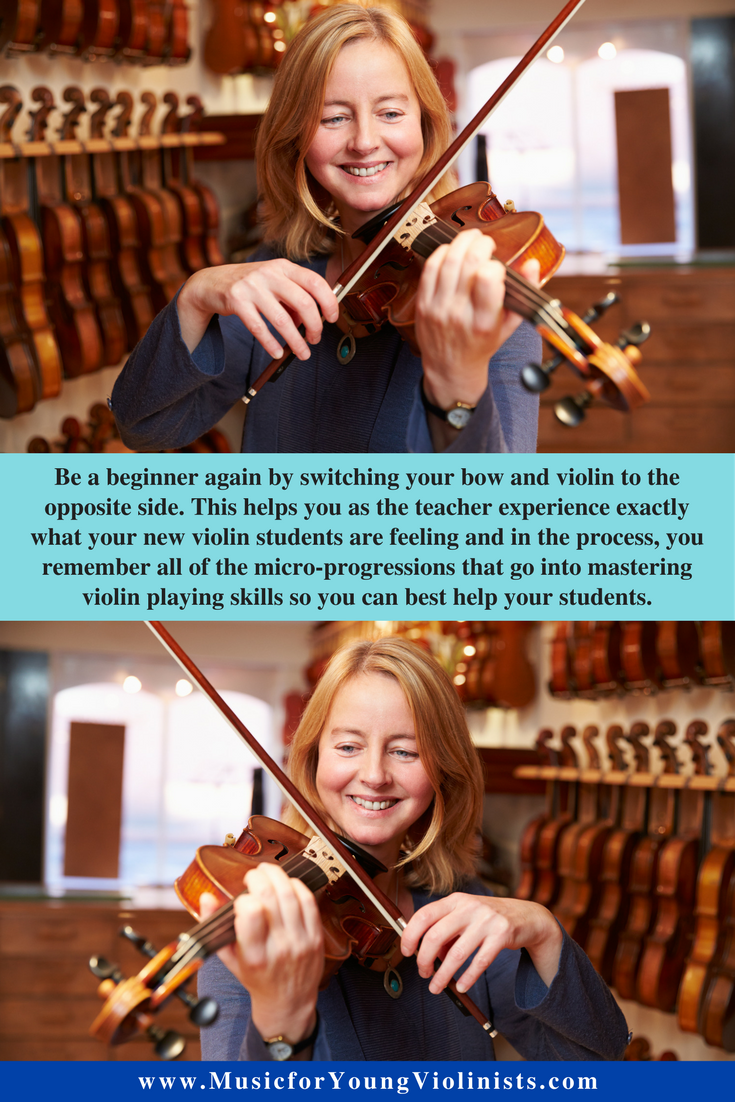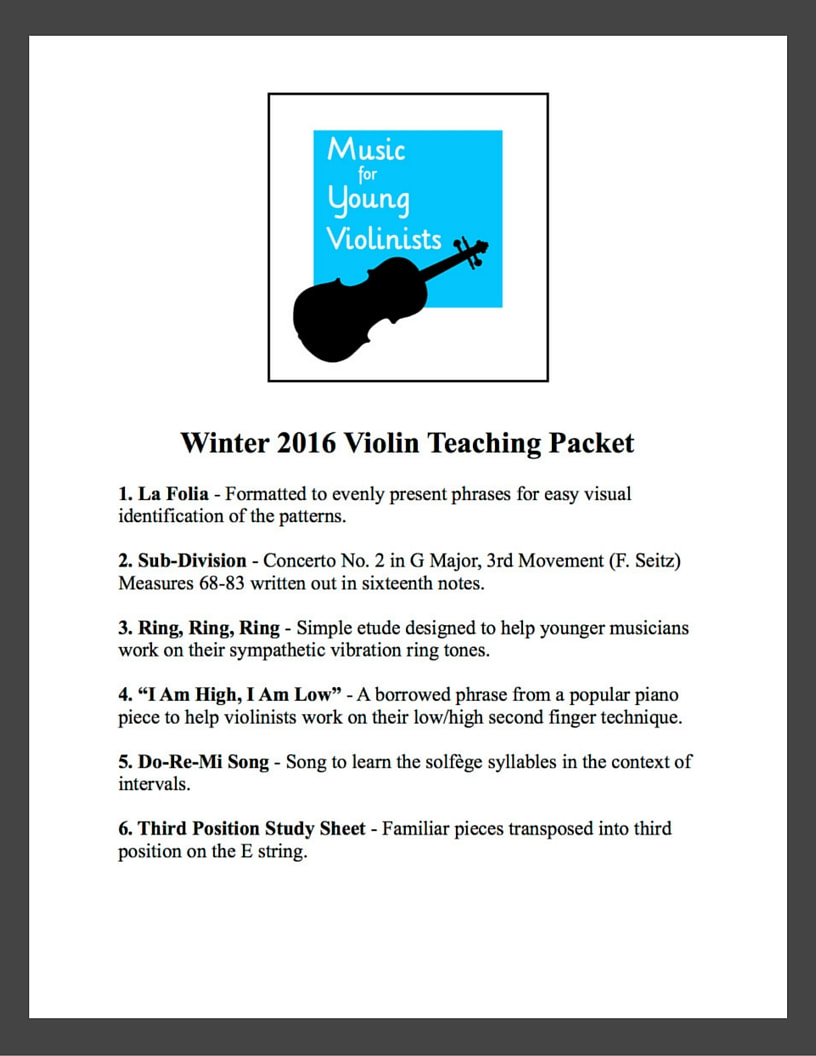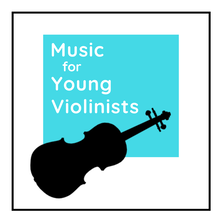|
The newest M4YV FREEBIE is a 2-page PDF designed to help students practice string crossings. The recent Oh Danny Boy FREEBIE inspired this resource with its beautiful opening made treacherous by a string crossing. These worksheets help guide a curriculum to master technical elements like this and can be used independently to help with other repertoire.
Let's talk about string crossings. To do this, we must go back into history and remember what made the violin so special. Countless stringed instruments in multiple cultures were strung on resonating chambers, such as the lute, guitar, hammered dulcimer and more (Wikipedia has a nice list if you are curious). However, with the addition of the bow to a stringed instrument with a resonating chamber, we then had a string instrument that could imitate the human voice with sustained notes that are shaped and connected. I believe this is our goal as violinists - to imitate the beauty of the human voice with our *bowing. It is a lifelong pursuit, and the art of crossing strings while maintaining a connected sound is particularly challenging. I tell my students that if someone was closing their eyes and listening to them play, it should sound like it is all being played on a single string. *Specifically for lyrical music, not for specific genres that emphasize other qualities of the violin. So, how do we cross strings with finesse and sonically hide the gaps our bows have to encounter? Working with a skilled teacher will guide a student toward this skill; like many things in our work, it does not compact nicely into a blog post. However, concepts include: 1- Raising & lowering the bow arm to the plain of the string. 2- Anticipating the coming string by changing the angle of the preceding note. 3- Practicing passages with as many bowing combinations as possible to synthesize a connected sound. This last point is where these worksheets are useful. They extract 3 notes in 3 locations of the bow and offer 24 different ways to practice these 3 pitches to develop elegant and singing string crossings. These worksheets were inspired by the opening of Oh Danny Boy (get PDFs of this piece here) but apply to any beginner-intermediate level student seeking support for mastering the skills of smoother string crossings. Can you just teach this concept to students without a worksheet? Absolutely; however, sometimes, a student makes the best use of their practice time with a visual guide. I am always curious to know your thoughts in the comments - how do you teach string crossings?
0 Comments
In this post you will learn what a double-stop for the violin is, the top 5 benefits of using double-stops and be able to download free double-stop PDF printables for beginner-advanced level violin. Double-stops on the violin are when two notes are played simultaneously and part of what makes the violin repertoire so thrilling, gorgeous, and sublime. See the image below for an example of how this would appear in a score. The term "double-stop" is a bit of a misnomer and can be confusing because nothing is actually stopping in the verb sense of the word stop (i.e., to cease or end). The term double-stop makes more sense when we think of "stop" as a noun referring to a location such as a bus stop. For violinists, the location refers to pitches on the fingerboard. When a request for more double-stop content from the M4YV project came to my inbox, I was an instant YES due to my captivation with this aspect of violin playing. I love double-stops so much that they are one of the reasons I play the violin! Double-stops are not hard, but they are different than playing on a single string. For some of the players here, it will be a new technique, which makes this the perfect time to remind us that new does not equal difficult, but without the proper mindset, new can be interpreted as feeling difficult. Keep reading to learn the 5 benefits of double-stops on the violin.  The Top 5 Benefits of Double-Stops on Violin:1- Improved intonation: Double stops help to hear pitches in relationship to each other, and this process leads to better intonation because intervals are more evident in the ear. 2- Learning block fingerings: Double-stops require using "block fingerings," where two fingers are placed on the fingerboard simultaneously. Block fingerings are more sophisticated than using a single finger at a time and help to develop skill. 3- Better understanding of whole & half steps: Double-stops fortify an understanding of whole and half steps because when using block fingerings, the fingers will feel the proportions of a whole and half step in relation to each other. 4- Advanced bow control: In the same way that double-stops require the left hand to use two fingers at a time, the right hand also needs to double it's playing requirements by refining it's control over two strings simultaneously. When we begin playing the violin, we work with focus to play just a single string at a time. When we start learning double stops, we exert focus to play two strings together with control and precision. 5- Advanced repertoire: The most magnificent repertoire composed for the violin uses double-stops, including but not limited to: J.S. Bach's 6 Sonatas & Partitas for Solo Violin, concerto cadenzas, and mesmerizing fiddle playing. Check out the videos below for some amazing examples of double-stops in violin repertoire.
Scroll down a bit on the page to find these FREEBIES to help learn and play double-stops. What are your favorite double-stop compositions?
Please share in the comments below. Learn How To Do Vibrato On The Violin With a New & Ergonomic Approach To Teaching Violinists Vibrato Using "Cello Position" As a teacher, the hardest thing for me to dissect for my students was vibrato (raise your hand if you can relate). After 15 years of teaching, I finally figured out an ergonomic and effective protocol to unlock the mystery of learning vibrato on the violin. The keys to establishing proper vibrato technique lie in understanding what makes it hard in the first place:
Once we take out these 2 elements, vibrato is clear to understand and easy to learn. Watch the video below for a demonstration, a teaching sequence for younger players and tips for practicing. This how-to learn vibrato on the violin video is for:
Please visit the FREEBIES page for more resources to support left-hand technique: Do you have a tip to help learn vibrato?
We would love to learn from you, please share in the comments below. Things 4 Strings® Studio Kit: |
Categories
All
Archives
February 2024
AuthorHi! It's me, Heather. I absolutely love working on the Music for Young Violinists project and all the many facets: blogging, website, music, teaching materials, freebies, videos, newsletter and giveaway contests. The best part is connecting with you so feel free to drop me a line. You can learn more about me on the "ABOUT" page. Thanks! |
|||||||||










 RSS Feed
RSS Feed
